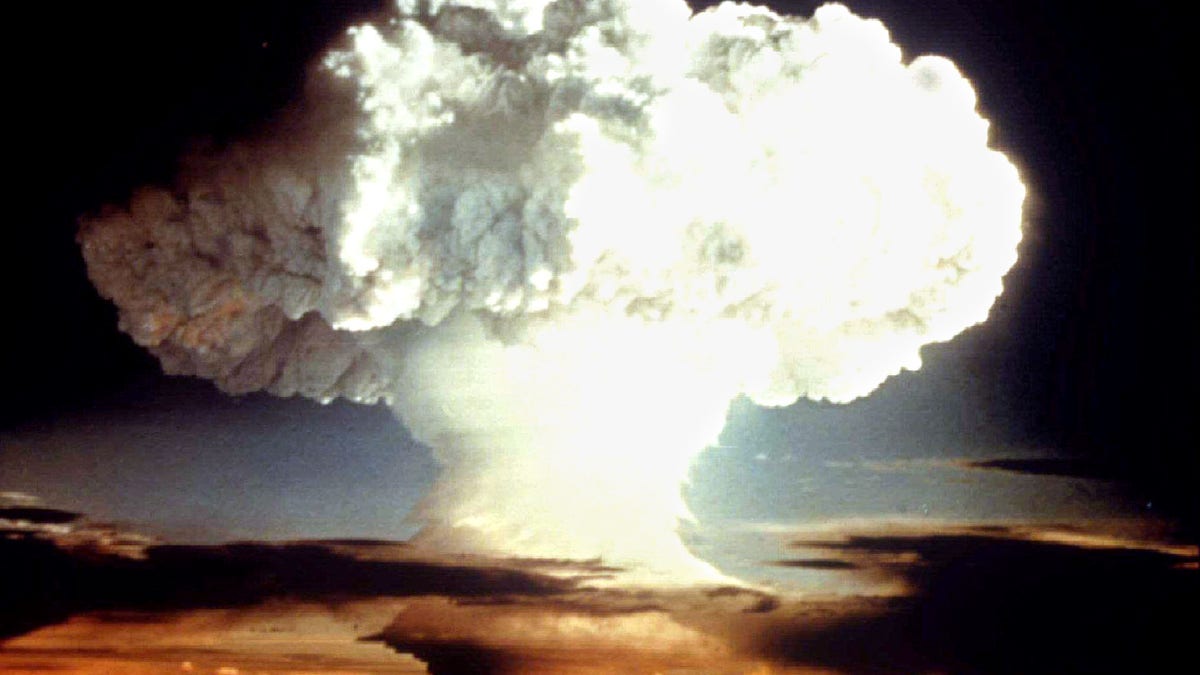Fox News Flash top headlines for July 15
Fox News Flash top headlines for July 15 are here. Check out what's clicking on Foxnews.com
Radiation levels across the Marshall Islands in the central Pacific Ocean, where the United States conducted more than 65 nuclear tests during the Cold War, are still alarmingly high — even higher than Fukushima and Chernobyl in some parts, a new study shows.
Researchers at Columbia University tested soil samples on four uninhabited isles and discovered that they contained concentrations of nuclear isotopes that are “significantly” higher than those found near the two disaster sites.

A nuclear test explosion from April 1954 is shown from the U.S. Defense Department. (brookings.edu)
“All of these measurements are important due to the potential for repopulation of at least some of the atolls in the Marshall Islands,” explained Dr. David Krofcheck, of the physics department at the University of Auckland.
“Such measurements of the effects of nuclear weapons testing in the Marshall Islands must continue on a regular basis into the indefinite future,” he told the Science Media Centre.
Two of the isles where the soil was analyzed — Bikini and Enewetak — were used as “ground-zero” for US nuclear tests between 1946 and 1958. The others, Rongelap and Utirik, were affected by radioactive fallout from the largest of the 67 tests conducted, known as the Bravo test.
SITE OF CHERNOBYL NUCLEAR DISASTER TO BECOME OFFICIAL TOURIST ATTRACTION UKRAINIAN PRESIDENT SAYS
Researchers at Columbia said they aimed to “present a picture of current radiological conditions” in the region “by examining external gamma radiation and soil radionuclide activity concentrations.”
Their findings, which were published Monday in the journal PNAS, showed that gamma radiation in some areas were “well above” the legal exposure limit established in agreements between the US and Republic of the Marshall Islands.
To continue reading on The New York Post, click here.

